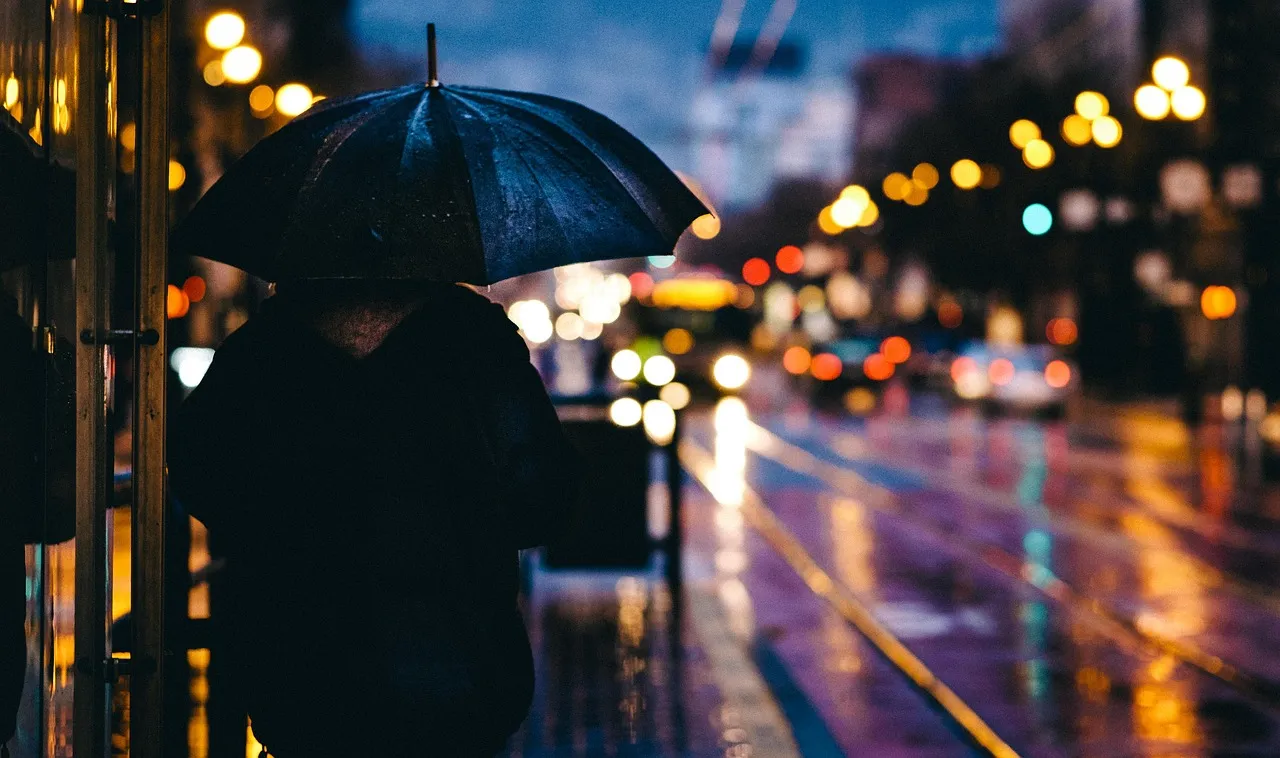How Often Does It Rain In Los Angeles?
With its sunny skies and palm trees, Los Angeles is famous for its mild, dry climate. But the city does get some rainfall over the course of a year. Keep reading to learn more about LA’s precipitation patterns.
If you’re short on time, here’s a quick answer to your question: Los Angeles averages just over 15 inches of rain per year, with most of that occurring between November and March.
Los Angeles’ Mediterranean Climate
Los Angeles is known for its Mediterranean climate, which means it experiences mild, wet winters and hot, dry summers. This unique climate is influenced by the Pacific Ocean and the surrounding mountains.
Wet, Cool Winters
During the winter months, Los Angeles receives the majority of its annual precipitation. The city experiences rainfall from November to March, with January being the wettest month. The average annual rainfall in Los Angeles is around 15 inches, but it can vary from year to year.
Despite the rainfall, winters in Los Angeles are still relatively mild compared to other parts of the country. The average temperature during the winter months hovers around 60 degrees Fahrenheit (15 degrees Celsius).
This makes it a pleasant time to explore the city and enjoy outdoor activities without extreme weather conditions.
Los Angeles’ wet winters are crucial for the region’s water supply. The rainfall replenishes local reservoirs and helps sustain the city’s water resources throughout the year. It also contributes to the lush vegetation and vibrant landscapes that Los Angeles is known for.
Hot, Dry Summers
Once the winter rains subside, Los Angeles transitions into its hot and dry summer season. From June to September, the city experiences very little rainfall, if any at all. The summer months are characterized by clear skies, high temperatures, and low humidity.
During the summer, the average temperature in Los Angeles can reach the mid-80s to low 90s Fahrenheit (29-32 degrees Celsius). However, it is not uncommon for temperatures to soar above 100 degrees Fahrenheit (38 degrees Celsius) during heatwaves.
The lack of rainfall during the summer months contributes to the dry conditions and increased risk of wildfires in the surrounding areas. It is important for residents and visitors to take precautions and stay informed about fire safety measures.
Despite the hot and dry weather, Los Angeles offers plenty of ways to beat the heat during the summer. From beautiful beaches to outdoor pools and water parks, there are numerous options for staying cool and enjoying the sunny weather.
Average Yearly Rainfall
Los Angeles, known for its sunny weather and mild climate, doesn’t receive as much rainfall as some other cities. However, it does have its fair share of precipitation throughout the year. Understanding the average yearly rainfall in Los Angeles can give residents and visitors a better idea of what to expect from the weather.
Rainiest Months
The rainiest months in Los Angeles typically occur during the winter season, specifically from December to March. During this period, the city experiences the majority of its rainfall. These months are characterized by cooler temperatures and occasional storms.
According to the National Weather Service, the average rainfall for Los Angeles in January is around 3.34 inches. February follows closely with an average of 3.80 inches. March and December receive slightly less rainfall, with averages of 2.43 inches and 2.33 inches, respectively.
These numbers may vary from year to year, but they give a good indication of the rainiest months in the city.
Driest Months
On the other hand, the driest months in Los Angeles tend to fall during the summer and early fall. June, July, August, and September usually have the least amount of rainfall. These months are known for their warm and dry weather, with temperatures often reaching their peak during this time.
The average rainfall for Los Angeles in July is around 0.01 inches, making it the driest month of the year. June and August have similarly low averages, with each month receiving only about 0.02 inches of rainfall. September sees a slight increase with an average of 0.11 inches.
These numbers indicate the minimal rainfall that occurs during the driest months in the city.
Annual Variability
It is important to note that the amount of rainfall in Los Angeles can vary from year to year. Some years may experience higher or lower rainfall than the average. This variability is influenced by various factors, such as climate patterns and weather systems.
For more detailed and up-to-date information on the average yearly rainfall in Los Angeles, you can visit the National Weather Service website. They provide comprehensive data and forecasts for the region, helping residents and visitors stay informed about the weather conditions in Los Angeles.
ENSO’s Effect on Rainfall
The El Niño Southern Oscillation (ENSO) is a climate pattern that occurs in the tropical Pacific Ocean. It has a significant impact on weather patterns around the world, including the amount of rainfall in different regions.
In Los Angeles, ENSO plays a crucial role in determining how often it rains and the intensity of rainfall.
El Niño Winters
During El Niño winters, Los Angeles tends to experience above-average rainfall. El Niño is characterized by warmer-than-normal sea surface temperatures in the central and eastern tropical Pacific. This leads to changes in atmospheric circulation patterns, which can result in increased moisture and storm activity in Southern California.
As a result, Los Angeles may see more frequent and intense rainstorms during these periods.
According to the National Oceanic and Atmospheric Administration (NOAA), El Niño winters have historically been associated with higher precipitation levels in Southern California. In some cases, El Niño events have brought record-breaking rainfall to the region.
For example, the winter of 1997-1998, which was influenced by a strong El Niño, saw significant rainfall in Los Angeles and other parts of California.
La Niña Winters
In contrast, during La Niña winters, Los Angeles tends to experience drier conditions. La Niña is characterized by cooler-than-normal sea surface temperatures in the central and eastern tropical Pacific.
This can lead to changes in atmospheric circulation patterns that result in decreased moisture and storm activity in Southern California.
During La Niña winters, there is typically a decrease in the frequency and intensity of rainfall in Los Angeles. This can lead to drier conditions and increased risk of drought in the region. However, it is important to note that the effects of ENSO on rainfall patterns can vary from year to year, and other factors such as local weather patterns can also influence rainfall in Los Angeles.
Understanding the impact of ENSO on rainfall patterns in Los Angeles is important for water resource management, agriculture, and overall climate monitoring. By studying historical data and monitoring current ENSO conditions, scientists and meteorologists can provide valuable insights into the likelihood of above-average or below-average rainfall in the region.
For more information on ENSO and its effects on rainfall, you can visit the Climate.gov website, which provides in-depth information and resources on this climate phenomenon.
Types of Rainfall Events
Steady Winter Rains
In Los Angeles, one of the most common types of rainfall events is the steady winter rains. These occur during the winter months, typically from November to March. The rainy season in Los Angeles is an important time for the region as it helps replenish water supplies and nourish the local vegetation.
During this time, the city experiences a series of storms that bring consistent rainfall over several days or weeks. While these rains may not be as intense as other types of rainfall events, they are crucial for maintaining the overall water balance in the area.
Summer Monsoonal Thunderstorms
Another type of rainfall event in Los Angeles is the summer monsoonal thunderstorms. These occur during the summer months, typically from July to September. These thunderstorms are fueled by the warm and moist air coming from the Gulf of California and the Gulf of Mexico.
They can bring heavy rainfall, thunder, and lightning to the area. These storms are often accompanied by strong winds and can result in flash floods in certain parts of the city. Despite their intensity, these summer thunderstorms are relatively short-lived, usually lasting for a few hours.
Tropical Storm Remnants
Occasionally, Los Angeles can also experience rainfall events caused by the remnants of tropical storms. These storms originate in the Pacific Ocean, typically in the eastern Pacific or the Gulf of Mexico, and can make their way towards the West Coast.
When they reach Los Angeles, they bring heavy rainfall and strong winds. These events are less frequent compared to the other types of rainfall events mentioned earlier, but they can have a significant impact on the region.
It is important for residents to stay informed about any potential tropical storm activity and take necessary precautions to ensure their safety.
For more information on Los Angeles rainfall patterns and historical data, you can visit the National Weather Service website.
Conclusion
While Los Angeles has a reputation for always sunny weather, the city does experience periods of rainfall primarily in the winter months. On average the LA area sees around 15 inches of precipitation per year, with a huge variation from year to year.








